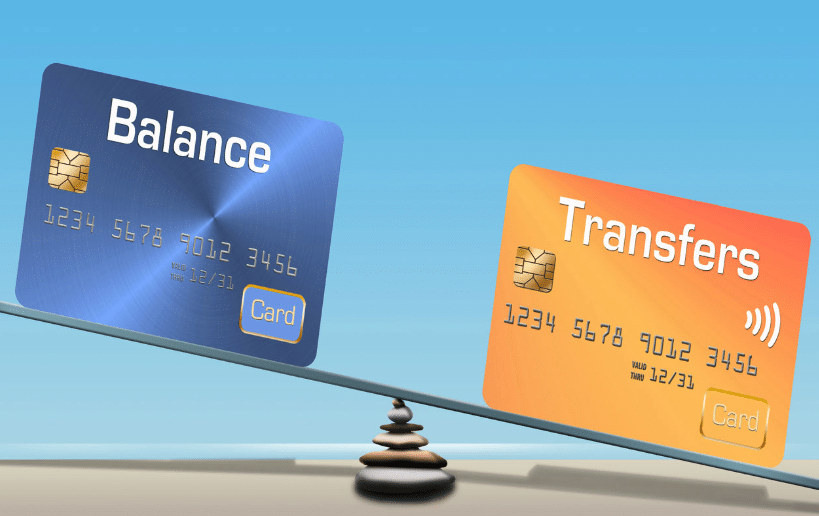
Credit card offers with no balance transfer fee can be a lifesaver for consumers burdened by high-interest debt. These offers allow you to transfer existing balances from other cards to a new card with a lower interest rate, potentially saving you hundreds or even thousands of dollars in interest charges. Imagine consolidating your debt onto a single card with a 0% introductory APR, giving you breathing room to pay down your balance without accruing additional interest. This strategy can be particularly advantageous if you’re facing multiple high-interest credit cards or have a large balance on a single card.
While these offers seem tempting, it’s crucial to carefully evaluate the terms and conditions before diving in. Understanding the introductory period, the APR after the introductory period, and any associated fees is essential to making an informed decision. By carefully considering your financial situation and the specific features of each offer, you can leverage balance transfer offers to your advantage and potentially achieve significant savings on your debt.
Credit Card Offers with No Balance Transfer Fee

Credit card balance transfer fees are charges levied when you move an outstanding balance from one credit card to another. These fees can significantly impact your finances, especially when dealing with large debts. Fortunately, some credit card issuers offer balance transfer offers with no fees, allowing you to save money and potentially improve your financial situation.
Understanding Balance Transfer Fees
Balance transfer fees are typically calculated as a percentage of the transferred balance. For example, a 3% balance transfer fee on a $5,000 balance would cost you $150. These fees can be substantial, especially if you’re transferring a large amount of debt.
Examples of High Balance Transfer Fees
Here are some examples of situations where balance transfer fees can be significant:
* Consolidating Debt: If you have multiple credit cards with high balances, you might consider transferring them to a single card with a lower interest rate. However, if the new card has a high balance transfer fee, it could offset the savings you’re hoping to achieve.
* Taking Advantage of a Promotional Offer: Some credit cards offer introductory periods with 0% interest on balance transfers. However, they often come with a balance transfer fee, which can eat into your savings.
* Transferring a Large Balance: If you’re transferring a large balance, even a small percentage fee can translate into a substantial cost.
Benefits of Credit Card Offers with No Balance Transfer Fee
Credit card offers with no balance transfer fees offer several advantages:
* Cost Savings: The most obvious benefit is saving money on balance transfer fees. This can significantly reduce your overall debt burden.
* Debt Consolidation: These offers can help you consolidate multiple credit card balances into one, making it easier to manage your debt.
* Lower Interest Rates: Many credit cards with no balance transfer fees also offer lower interest rates, which can further reduce your debt repayment costs.
Factors to Consider When Choosing a Balance Transfer Offer

Transferring your credit card balances can help you save money on interest, but it’s crucial to choose the right offer. There are several factors to consider to ensure you’re making the most of your balance transfer.
APR
The APR, or Annual Percentage Rate, is the interest rate charged on your balance. A lower APR means you’ll pay less interest over time. When comparing balance transfer offers, look for cards with a low introductory APR that lasts for a significant period, typically 12-18 months. After the introductory period, the APR usually reverts to a standard rate, which can be much higher.
Transfer Period
The transfer period is the time frame during which you can transfer your balances to the new card without incurring a balance transfer fee. Some offers have a limited transfer period, so it’s important to understand this timeframe and plan your transfers accordingly.
Fees
While many balance transfer offers advertise “no balance transfer fee,” there may be other fees associated with the card, such as an annual fee or a penalty APR for late payments. Carefully review all the fees associated with the card before making a decision.
Creditworthiness
Your creditworthiness plays a significant role in determining the APR and fees you’ll qualify for. A higher credit score typically leads to better terms and lower APRs. If you have a lower credit score, you may have to settle for a higher APR or additional fees.
Strategies for Utilizing Balance Transfer Offers

Balance transfer offers can be a powerful tool for managing credit card debt, but it’s crucial to use them strategically to maximize their benefits. By understanding the intricacies of these offers and employing effective strategies, you can effectively reduce your debt burden and improve your financial standing.
Maximizing Benefits of Balance Transfer Offers
Transferring high-interest balances to a card with a lower APR can significantly reduce your interest charges and help you pay down debt faster. Here are some strategies to maximize the benefits of balance transfer offers:
- Transfer high-interest balances: Prioritize transferring balances from cards with the highest interest rates to cards with the lowest introductory APRs. This strategy helps you save the most on interest charges and allows you to pay down your debt more quickly.
- Pay down debt quickly: Once you’ve transferred your balances, make every effort to pay down the transferred debt as quickly as possible. Aim to pay more than the minimum payment each month to minimize the amount of interest accrued during the introductory period.
- Consider a balance transfer card with a long introductory period: Look for cards with introductory periods of 12 to 18 months or longer, giving you more time to pay down your debt before the standard APR kicks in. This extended grace period allows you to make substantial progress on your debt reduction goals.
- Avoid new purchases: After transferring your balances, resist the temptation to make new purchases on the balance transfer card. Focus solely on paying down the transferred debt to avoid accruing new interest charges and prolonging your debt repayment journey.
Potential Risks and Drawbacks
While balance transfer offers can be beneficial, it’s essential to be aware of potential risks and drawbacks associated with them.
- Interest charges after the introductory period: After the introductory period expires, the standard APR on the balance transfer card will apply. If you haven’t paid off the transferred balance by then, you’ll start accruing interest at a higher rate, potentially offsetting the savings you initially gained.
- Balance transfer fees: Some balance transfer cards charge a fee for transferring your balance. This fee can range from a percentage of the transferred balance to a flat fee. Be sure to factor in the balance transfer fee when comparing offers, as it can impact the overall cost of using a balance transfer card.
- Credit score impact: Applying for a new credit card can temporarily lower your credit score, as it represents a hard inquiry on your credit report. Consider the potential impact on your credit score before applying for a balance transfer card.
Tips for Managing Credit Card Debt, Credit card offers with no balance transfer fee
Here are some practical tips for managing credit card debt effectively:
- Create a budget: Track your income and expenses to understand where your money is going. This helps you identify areas where you can cut back and free up more funds to pay down your debt.
- Prioritize high-interest debt: Focus on paying down debt with the highest interest rates first, as this minimizes the amount of interest you accrue over time.
- Negotiate with creditors: If you’re struggling to make payments, contact your creditors to explore options like lower interest rates, payment plans, or temporary hardship programs.
- Consider debt consolidation: A debt consolidation loan can help you combine multiple high-interest debts into a single loan with a lower interest rate. This can simplify your debt repayment process and potentially save you money on interest charges.
Final Summary
Navigating the world of credit card offers can be overwhelming, but understanding the nuances of balance transfer offers can empower you to make informed decisions. By carefully considering your financial situation, comparing different offers, and utilizing effective strategies, you can leverage these offers to your advantage and embark on a journey towards financial freedom. Remember, a little research and careful planning can go a long way in achieving your financial goals.
User Queries: Credit Card Offers With No Balance Transfer Fee
What happens after the introductory period ends on a balance transfer offer?
Once the introductory period ends, the balance transfer offer’s interest rate will revert to the card’s standard APR, which is typically higher. It’s crucial to pay down your balance as much as possible during the introductory period to minimize interest charges once the standard APR kicks in.
Are there any other fees associated with balance transfer offers besides the transfer fee?
Some balance transfer offers may have additional fees, such as a balance transfer fee, annual fee, or late payment fee. It’s important to review the terms and conditions of the offer carefully to understand all associated fees.
How can I find the best balance transfer offer for my needs?
To find the best balance transfer offer, compare different offers based on factors such as the introductory APR, the transfer period, any associated fees, and the card issuer’s creditworthiness. You can use online comparison tools or consult with a financial advisor to find the most suitable offer for your specific circumstances.





